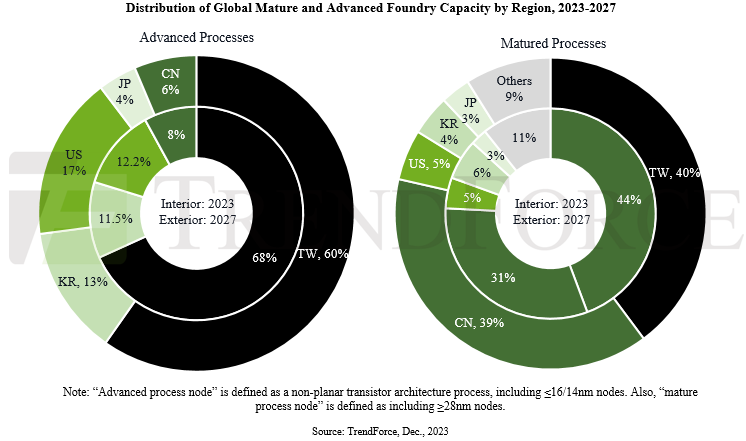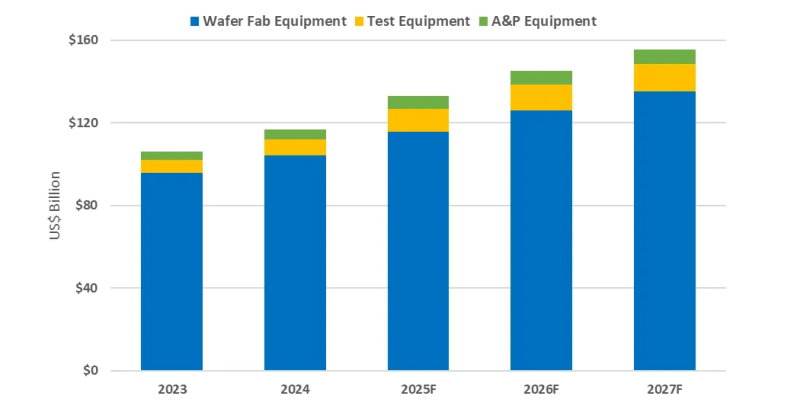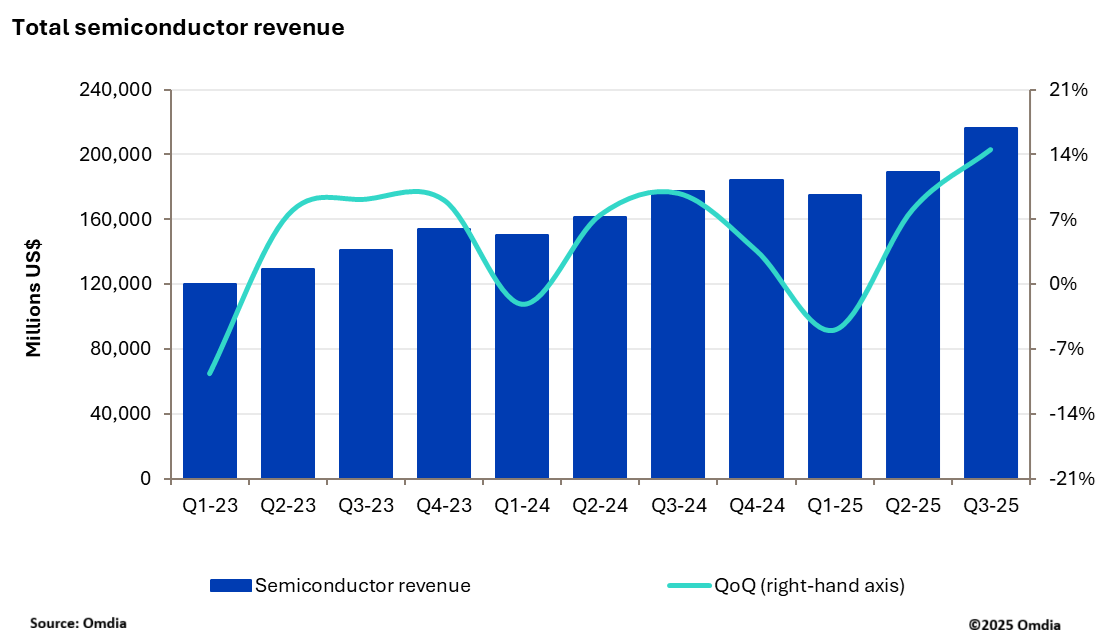The share of the foundry industry now held by Taiwan and Korea will shrinkto 41% and 10% respectively by 2027, says TrendForce.
Currently Taiwan holds approximately 46% of global semiconductor foundry capacity, followed by China (26%), South Korea (12%), the US (6%), and Japan (2%).
In advanced manufacturing processes (including 16/14nm and more advanced technologies), Taiwan leads with a 68% global capacity share in 2023, followed by the US (12%), South Korea (11%), and China (8%).

Taiwan holds nearly 80% share when it comes to EUV generation processes (such as 7nm and beyond).
While the US’s share of advanced process capacity is expected to increase to 17% by 2027, TSMC and Samsung will still account for over half of this capacity as they ramp up their US production sites.
China is focusing aggressively on mature process technologies (28nm and older). By 2027, China’s share in mature process capacity is expected to reach 39%, with room for further growth if equipment procurement proceeds smoothly.
As Chinese manufacturers rapidly expand their mature process capacities—backed by government subsidies—this could lead to intense price competition in products like CIS, DDI, PMIC, and power discrete, impacting Taiwan-based foundries like UMC, PSMC, and Vanguard.
Vanguard is expected to be most affected due to its product line including LDDI, SDDI, PMIC, and power discrete. Other companies like UMC and PSMC will maintain their advantages in the 28/22nm OLED DDI and memory sectors.
In response to chip shortages and geopolitical influences, fabless customers are diversifying risk by working with multiple foundries, potentially leading to increased IC costs and concerns over duplicate orders.
Customers are also requiring global validation of production lines, even with long-term foundry partners, to enable flexible capacity adjustments.
Stay up to date with the latest in industry offers by subscribing us. Our newsletter is your key to receiving expert tips.

Worldwide semiconductor equipment sales are projected to grow 13.7 percent in 2025, reaching a record 133 billion dollars, Semi announced at Semicon Japan. This momentum is expected to continue throug

The smartphone industry is facing considerable cost challenges in 2026 amid ongoing memory supply shortages and rising prices. This situation is expected to lead to a 1.6% decrease in annual shipments

New research from Omdia shows that the semiconductor market delivered a record breaking performance in 3Q25 with industry revenue reaching $216.3bn, up 14.5% quarter-over-quarter (QoQ). This marks the